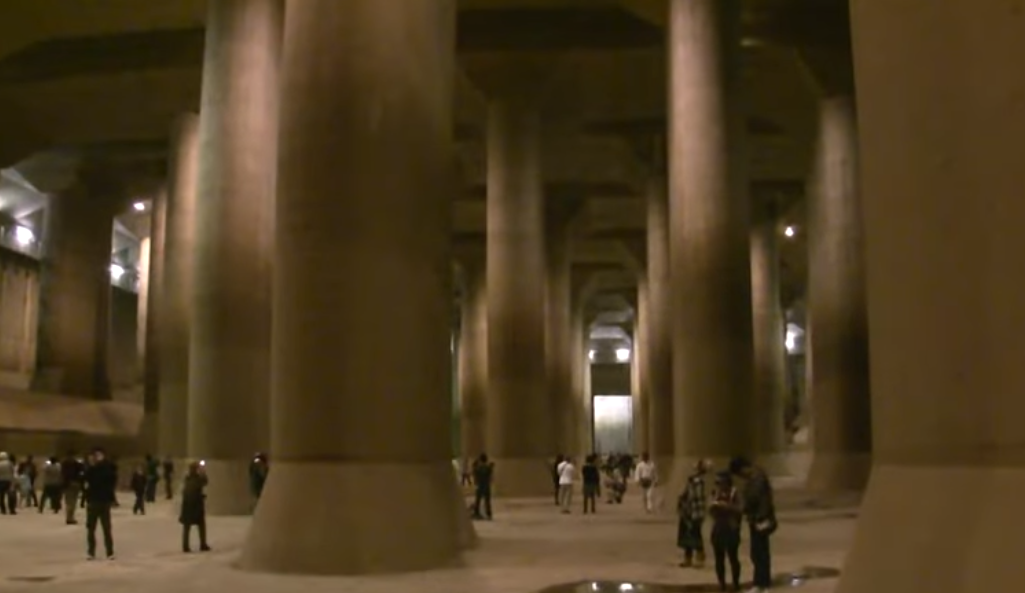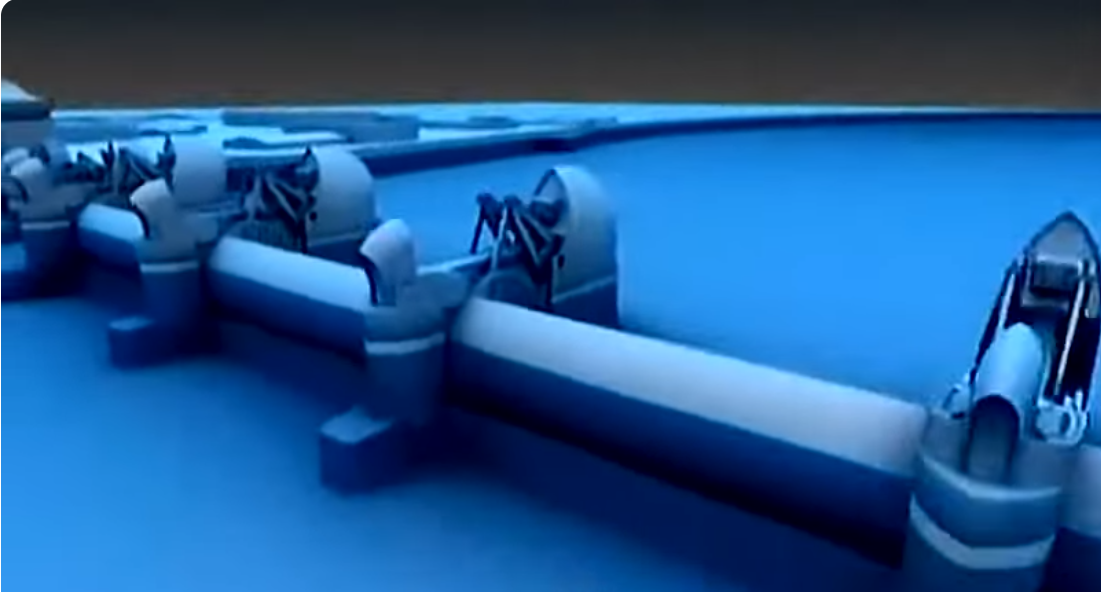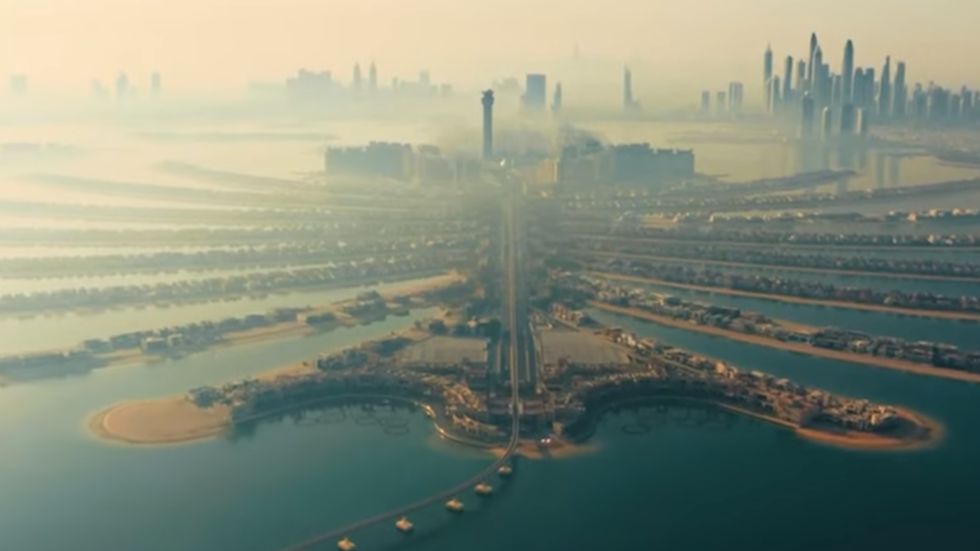Unprecedented Natural Disaster
First, let’s look back at the unique event in history, Dubai at the end of April 2024, the most famous city in the UAE had never witnessed a natural disaster of such magnitude in the past but had to endure a storm and torrential rain. The United Arab Emirates experienced the heaviest rainfall in the past 75 years with a 24-hour rainfall equivalent to that of an entire year. The lives of many people in the dazzling financial and service center were almost paralyzed, and Dubai was unprepared for such flooding. As a result, the famous country in the Middle East, the United Arab Emirates, was nearly unable to respond.

Emergency response agencies had to work around the clock, and the chaos lasted for many days after the rain at Dubai airport. This is one of the busiest and most famous airports in the world that was completely paralyzed. As the runway submerged underwater, all flights were canceled, glamorous centers were flooded with rainwater seeping through the ceilings, elevators had to stop operating in skyscrapers, forcing people to climb stairs up to dozens of floors. Many people were even unable to return home, some had to sleep in their cars.
These images were truly shocking for Dubai, known as a high-tech city, a top international tourist destination with advanced infrastructure. When the water receded, Dubai was still very chaotic as the authorities and residents were confused when faced with flooding for the first time. If it had been in Hanoi or another city, perhaps the response would have been quicker.
Super Project Emerges
That flood was indeed a very unusual phenomenon, which cannot be denied, but weather experts say that this abnormality poses a risk of recurrence in the future, as the world’s climate is now more unpredictable than ever. Meteorological experts predict that rainfall in Dubai could be higher in spring, as well as throughout the summer, and summer could also last longer and be hotter than usual, which is already very hot here. Even European countries, which are not accustomed to hot summers, are now gradually getting used to it.
Northern Vietnam is also no longer too cold in winter, so let’s try to compare Dubai’s need to get used to higher-than-normal rainfall as an acceptable thing. The solution now is to find a way to cope, losing the cow and then worrying about building the barn, and Dubai will cope in a very unique way, which is to spend money. In mid-2024, the Vice President and Prime Minister of the United Arab Emirates, Mohammed Bin Rashid Al Marun, announced a project worth 8 billion US dollars to build the largest rain drainage system in the region located in Dubai. This project is named Starf and will be launched immediately.

Due to its large scale, this project will take many years, expected to be completed by 2033, which means it will take a full 9 years. Let’s refer to some statistics to see how big this project is. The amount of water that this project can absorb in one day in Dubai reaches a maximum of 20 million cubic meters. Thus, it will improve the water absorption capacity by up to 700% of the largest city in the United Arab Emirates. Rainfall like that of last April will therefore be nothing for Dubai.
And of course, Dubai is not only focused on addressing the recent rainfall; they use it as a standard image and calculate for the long-term future, as this project is expected to effectively solve Dubai's drainage issues, not just in 1 year, 2 years, 10 years, or a few decades, but for the next 100 years. Moreover, this project aims to upgrade infrastructure to effectively address the challenges of natural disasters that Dubai may face. The recent heavy rain truly touched the pride of Dubai, the wealthy individuals.
As one of the most famous and luxurious cities in the world, Dubai cannot afford to lose face due to weakness against nature and weakness against raindrops. They accept to spend money to solve the problem and regain their self-esteem; in fact, Dubai understands that only by spending a large amount of money once can they permanently avoid the need to continuously spend on repairs. For instance, during the flood in April 2024, they spent a total of 544 million US dollars just to repair homes after the floods.
Breaking Records
So far, the specific details of the super project in Dubai have not been revealed too much, only that the amount of water it is ready to absorb is 20 million cubic meters per day and its cost of 8 billion US dollars is indeed a figure that has broken records. In fact, each country has different circumstances and challenges in preventing floods. The scale of each project is also not the same, but at least in terms of ambition, Dubai always aims to do things that are truly grand and show its extreme ambitions.
Previously, when mentioning the drainage project considered the largest in the world, people would think of Japan with a gigantic water drainage system located underground near Tokyo. The system is dubbed Japan's "underground palace" and is the largest underground drainage project in the world. It was built 50 meters underground beneath a football field and a park in Saitama province, on the outskirts of Tokyo, Japan. The project started in 1992, became operational in 2006, and was officially completed in 2009. Thus, it took 17 years to complete, and the entire project was carried out by six Japanese construction companies with a total cost of up to 3 billion US dollars.

Described as consisting of five large concrete vertical shafts 65 m high, 32 m in diameter, connected by a 6.3 km long tunnel system. At the end of the system, water is stored in a massive pressure control chamber called the temple, which functions to reduce the pressure of the flowing water and control the water flow in case any pump in the system fails. After becoming operational in August 2008, a torrential rain poured down in the area at that time. It helped drain 12 million cubic meters of water into the Edo River, equivalent to the amount of water flowing in 25,000 standard 25 m swimming pools. In terms of volume, it still does not match Dubai.
Another super large project worth mentioning is located in Singapore. Previously, Singapore relied on water from three reservoirs and mainly imported water from neighboring Malaysia. But today, Singapore has collected rainwater through a network of pipes stretching up to 8,000 kilometers leading to 17 reservoirs, while also reclaiming used water from a drainage tunnel system located 60 m underground. The canal system with over 40 drainage channels totaling 1,000 km in length, along with an 8,000 km long drainage network, has helped Singapore manage flooding due to high tides and heavy rains in recent years.
Since 1973, the Singapore government has spent about 2 billion US dollars to build the canal and drainage system. This is a system evaluated as very intelligent and modern, helping to solve many problems at once. The drainage system in the UK is also highly regarded. In the mid-20th century, a severe flood occurred in London when seawater overflowed into the Thames River, causing over 300 deaths and significant economic damage. After that horrific flood, the UK government decided to build a flood barrier system to protect central London from flooding. This project was completed in 1984 and cost 535 million pounds, considered one of the largest figures in the world at that time.

From its inauguration until July 2014, this system has been closed a total of 174 times to prevent flooding, especially in 2007 when it was closed twice due to a major storm in the North, equivalent to the super storm of 1953. Additionally, it is also raised monthly to test its operational capacity in case it gets stuck or something. Besides the aforementioned projects, there are also several large projects in Australia, Canada, Switzerland, or the USA, importantly, these projects have solved quite a few issues related to flooding. Immediately, people think of Vietnam, especially in Hanoi, when billion-dollar projects are implemented but do not help solve the flooding problem every time it rains heavily.
For instance, the Hanoi drainage project Phase Two began construction in 2008, with an initial estimated total investment of about 6,500 billion VND. However, by June 2016, the total investment for the project had been adjusted to over 8,000 billion VND. The goal of the project is to ensure drainage during heavy rains with the large amounts that Hanoi has to endure, but its effectiveness is something we have all seen, especially after heavy rains.
In the end, it is difficult to compare or comment on any project because the characteristics of each city and each country are different. Perhaps it can only be concluded that the drainage project that Dubai is planning to implement will go down in world history as one of the most expensive and ambitious projects of this wealthy Middle Eastern nation.
